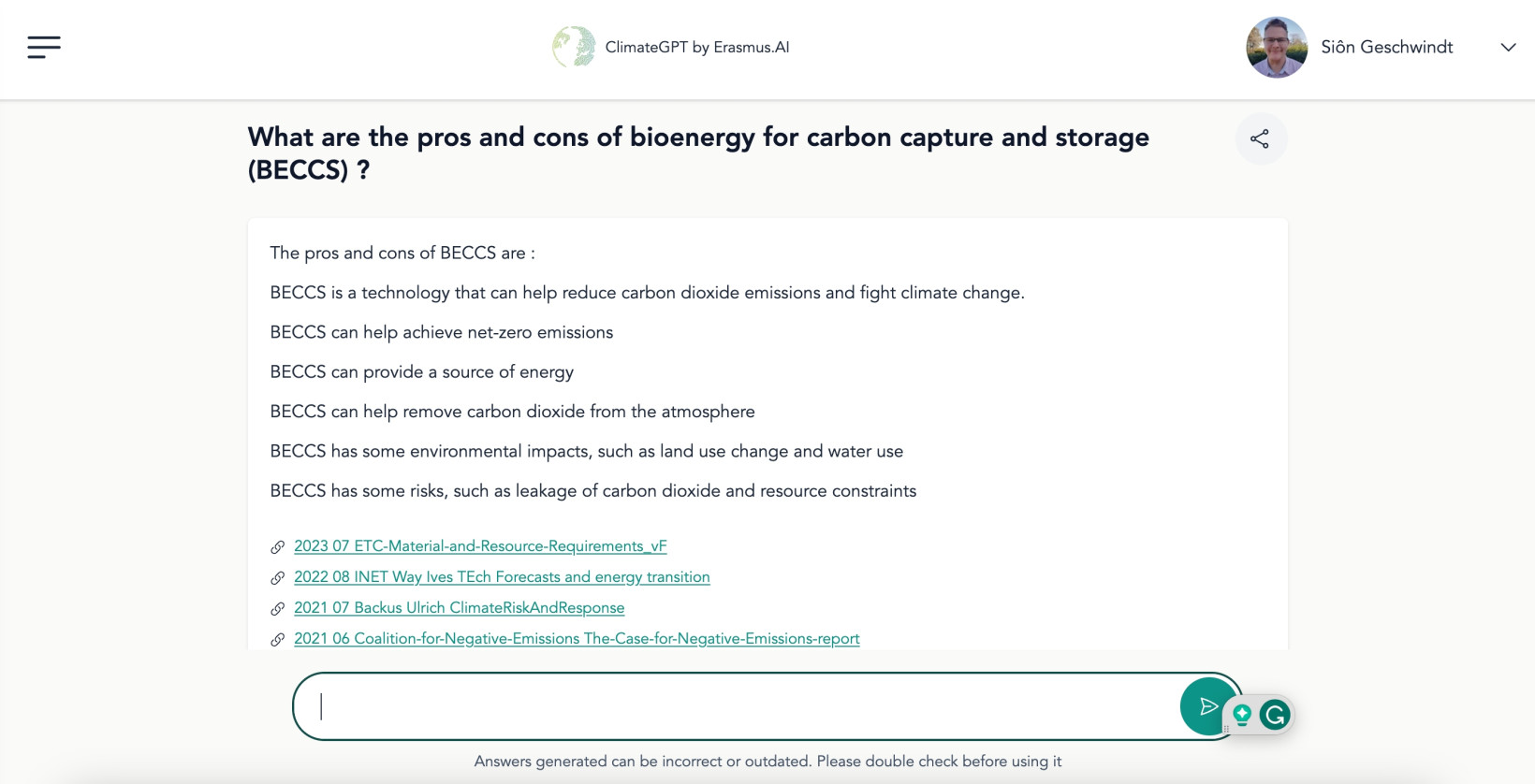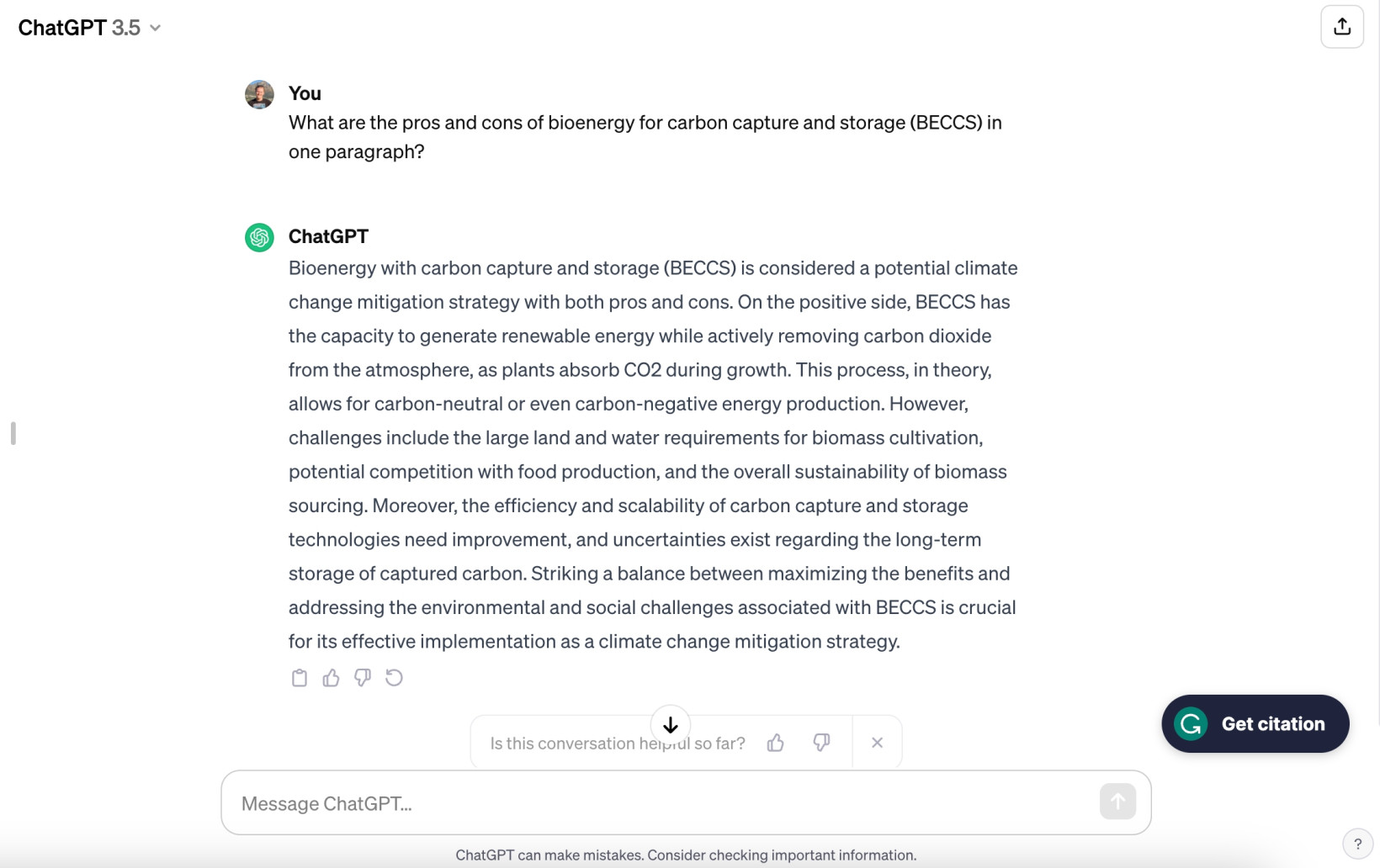
Fledgling AI startup EQTY Lab has unveiled the “first-ever” AI chatbot designed to provide accurate and authenticated climate data.
AI tools such as ChatGPT and Google’s Bard have faced concerns over the accuracy of the information they provide, as they are trained on data scraped from the internet, but do not necessarily provide rigorous fact-checking.
But EQTY Lab claims its open-source ClimateGPT service would provide “trust and transparency” as it draws on scientific data using a robust model that authenticates, secures, and governs the information provided. The model is integrated with Hedera, a public blockchain, which ensures the “highest standards of data integrity,” the startup claims.
Powered by technology from Dutch startup Erasmus.AI, the chatbot is apparently available in 20 languages, although we could only find the English version. Its creators also say that it is trained and hosted entirely on renewable energy.
While this all sounds great, it seems that ClimateGPT is little more than hot air at this point.
We asked the chatbot to answer a basic question related to a recent article we wrote on the problems of bioenergy. Its answers, which you can see below, were rather disappointing and definitely not useful from a climate science perspective.


Here’s how those answers compare to the same prompt in ChatGPT, for comparison:


This discrepancy is likely due to ClimateGPT only being in the nascent stages of development. Ariana Fowler, head of research at EQTY Lab said that the tool is “still evolving.”
Even though the chatbot is pretty useless at present, that doesn’t necessarily mean it’s a bad idea. Quick access to reliable, secure climate data could be a powerful tool for a broad range of researchers and decision-makers. And ClimateGPT also provides sources to back up its answers — something that most mainstream chatbots don’t (to much controversy).
If ClimateGPT can scale up it has the potential to join a host of other AI applications solving problems ranging from energy efficiency to wildfire detection.





